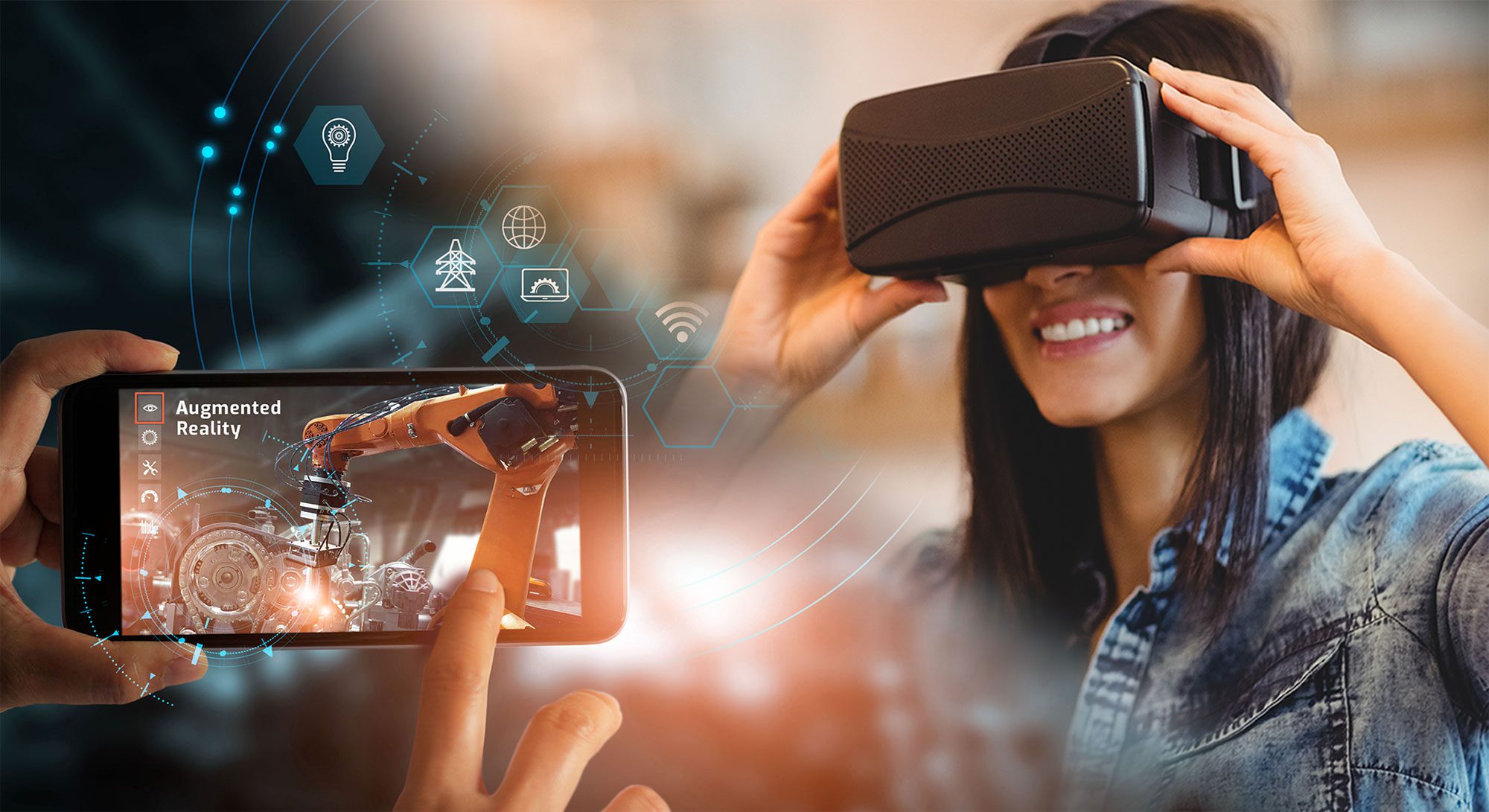Discover how AR and VR are transforming industries like healthcare, education, retail, gaming, and manufacturing. Explore 2025’s latest updates in immersive technology, smart wearables, and real-world applications of augmented and virtual experiences.
Augmented Reality (AR) & Virtual Reality (VR) in 2025: Revolutionizing Digital Interaction
Augmented Reality (AR) and Virtual Reality (VR) technologies are no longer just buzzwords. In 2025, they’ve become powerful tools shaping everything from healthcare and education to gaming, automotive, and retail. These immersive technologies are blurring the lines between the physical and digital worlds, offering interactive, engaging, and intelligent experiences.
Here’s a comprehensive look at all the latest AR/VR developments, applications, and industry trends in 2025.
Latest AR/VR Innovations and Trends
Next-Gen Headsets and Wearables
-
Companies like Apple (Vision Pro), Meta (Quest Pro 3), Sony, and HTC have launched ultra-light, high-resolution headsets with improved motion tracking and comfort.
-
AR smart glasses now include eye-tracking, gesture controls, and real-time translation.
Mixed Reality (MR) and Spatial Computing
-
Mixed Reality, which blends AR and VR, is gaining traction with tools that understand physical environments and overlay digital content in real-time.
-
Spatial computing platforms let users interact with digital content using voice, movement, and eye-tracking, enhancing workflows and collaboration.
AI Integration
-
AI is being integrated into AR/VR experiences to enable context-aware content, realistic avatars, and natural language processing.
-
Virtual assistants within VR can guide users through simulations, training sessions, and virtual environments.
Industry-Wise Applications and Benefits
Healthcare
-
AR-powered surgeries assist doctors with 3D overlays of anatomy in real-time.
-
VR is used for mental health therapy, pain management, and rehabilitation, offering immersive healing experiences.
Education
-
AR/VR brings immersive learning to students, with interactive labs, historical recreations, and global field trips without leaving the classroom.
-
Institutions are using VR to train medical students, simulate real-life engineering problems, and teach language through immersion.
Retail and E-commerce
-
Virtual try-on features for clothes, accessories, and makeup using AR are becoming standard.
-
VR showrooms allow customers to explore products in 3D, from home furnishing to electronics.
Gaming and Entertainment
-
Gaming has become deeply immersive with haptic feedback, room-scale movement, and multi-sensory storytelling.
-
Platforms like PlayStation VR2 and Meta Horizon Worlds are setting new standards for multiplayer VR experiences.
Manufacturing and Industry
-
AR is used for remote maintenance, real-time diagnostics, and training technicians without needing physical equipment.
-
VR simulations reduce errors in prototyping, saving both time and cost.
Travel and Tourism
-
VR allows people to virtually explore destinations before booking, while AR enhances physical tours with interactive guides and real-time information.
Software Ecosystem and Platforms
-
Platforms like Unity and Unreal Engine continue to power AR/VR content creation.
-
WebXR is gaining popularity, allowing immersive experiences right in the browser without downloading apps.
-
Cloud-based services offer real-time rendering, making AR/VR content faster and more responsive.
Challenges and Future Outlook
While AR/VR adoption is expanding rapidly, challenges remain:
-
Battery life, affordability, and user comfort need continued improvement.
-
Content creation for immersive platforms is still complex and costly.
-
Data privacy and motion sickness remain concerns in fully immersive environments.
Looking ahead, as 5G and edge computing mature, AR/VR will become more seamless, untethered, and widespread. From smart cities to home entertainment and industrial design, immersive technology will redefine how we see and shape the world around us.
